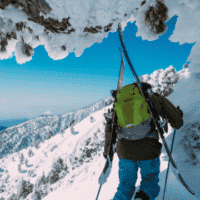
This breathing condition can affect anyone at high altitudes and can lead to insomnia, sleep disturbances, frequent awakenings, a decrease in total sleep time as well as the quality of sleep. This lack of quality sleep may lead to headaches, next day fatigue, mood changes, depression, lack of memory or concentration and changes in mental processing time.
People who already have sleep apnea should be especially vigilant, since their breathing troubles may worsen in the thin air of a high-altitude environment.
No one is immune to the hurdles of altitude-induced insomnia. Research has found that even the fittest of professional athletes will still experience shorter periods of sleep with poorer quality of sleep at high elevations.
The best relief to alleviating altitude-induced insomnia is to introduce the body to a higher content of oxygen either by oxygenating your bedroom or by sleeping at a lower altitude, this may not always be possible. Some other known ways to improve the effects of altitude sickness and altitude-related insomnia would be to ascend to higher altitudes gradually (over a period of days), staying hydrated by drinking at least three to four quarts of water a day and avoiding tobacco and alcohol.






